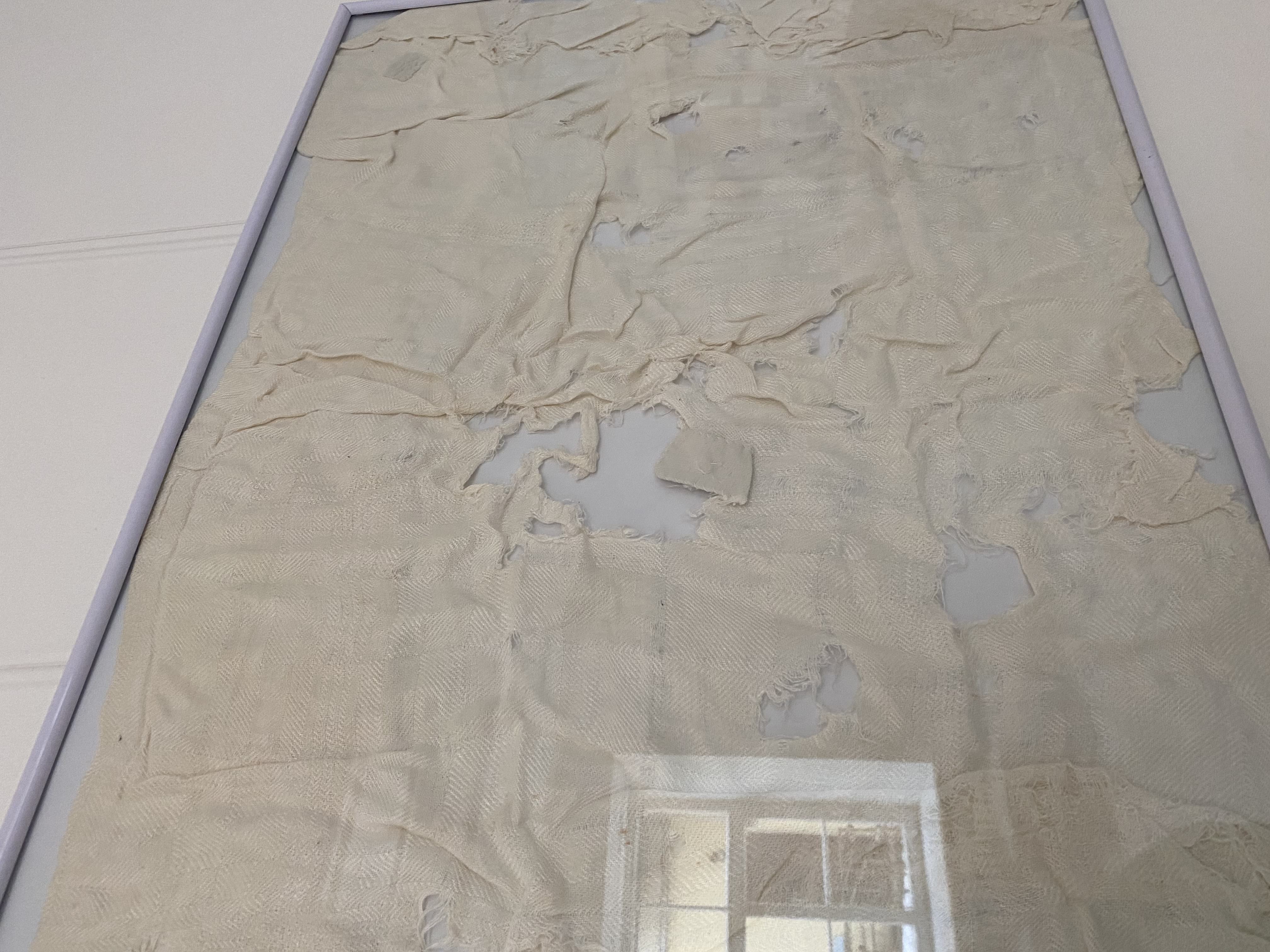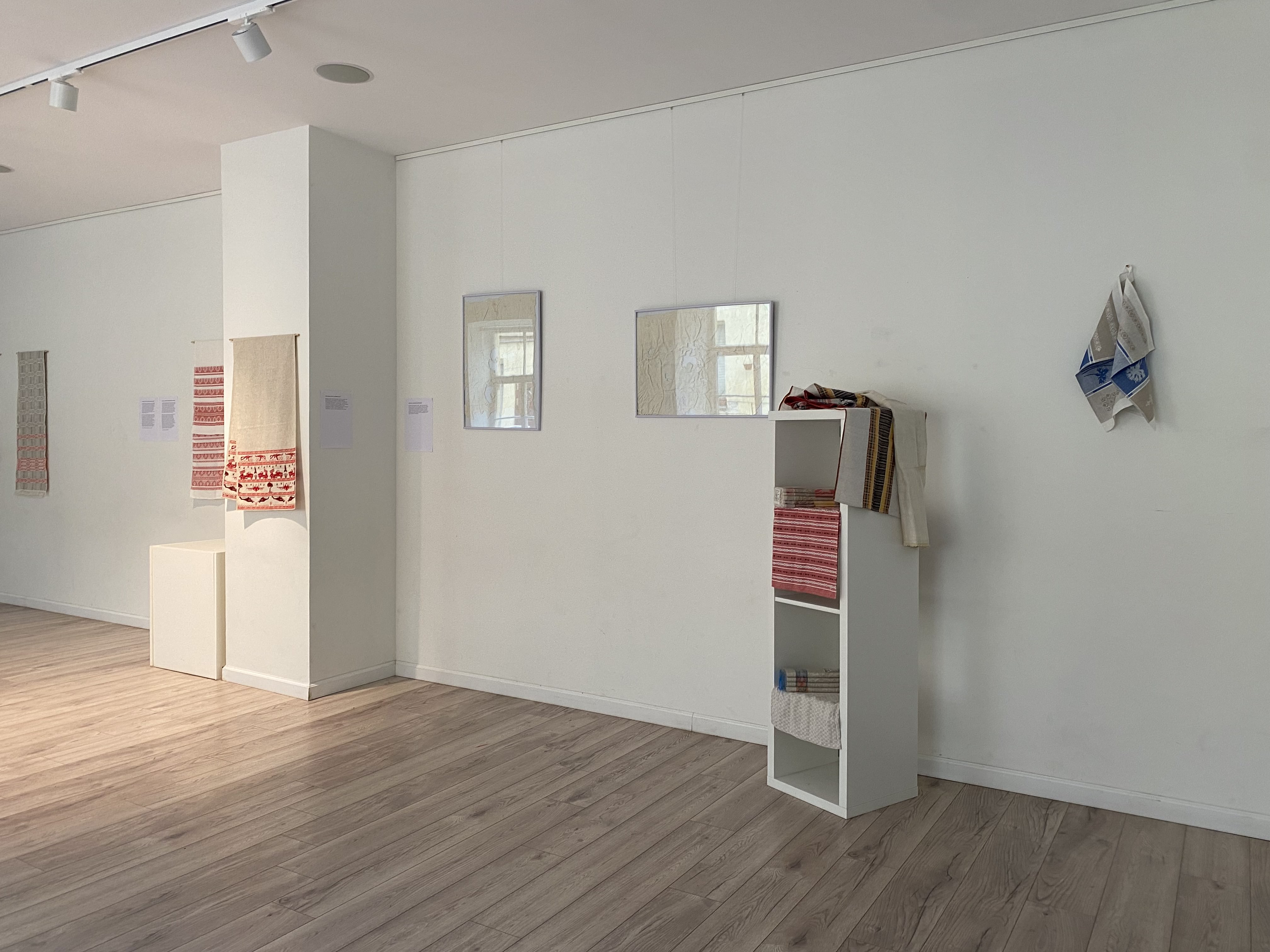Interwoven. An exhibition on how we think about heritage
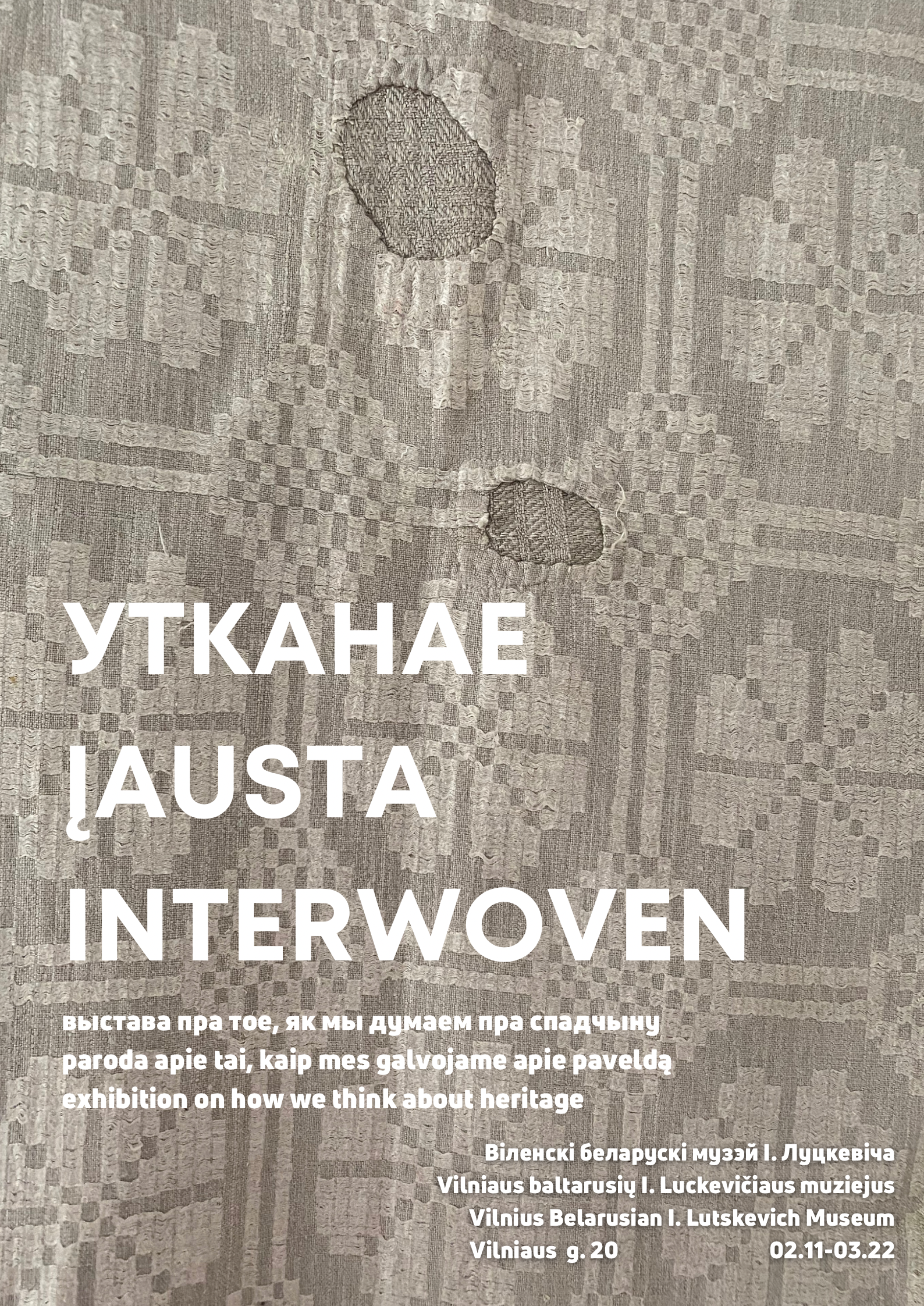
Hello and welcome to our new exhibition! You can see it in person until March 22 in our museum at Vilnius str. 20. We are open Wednesdays-Sundays 14:00-20:00 and the admission is free.
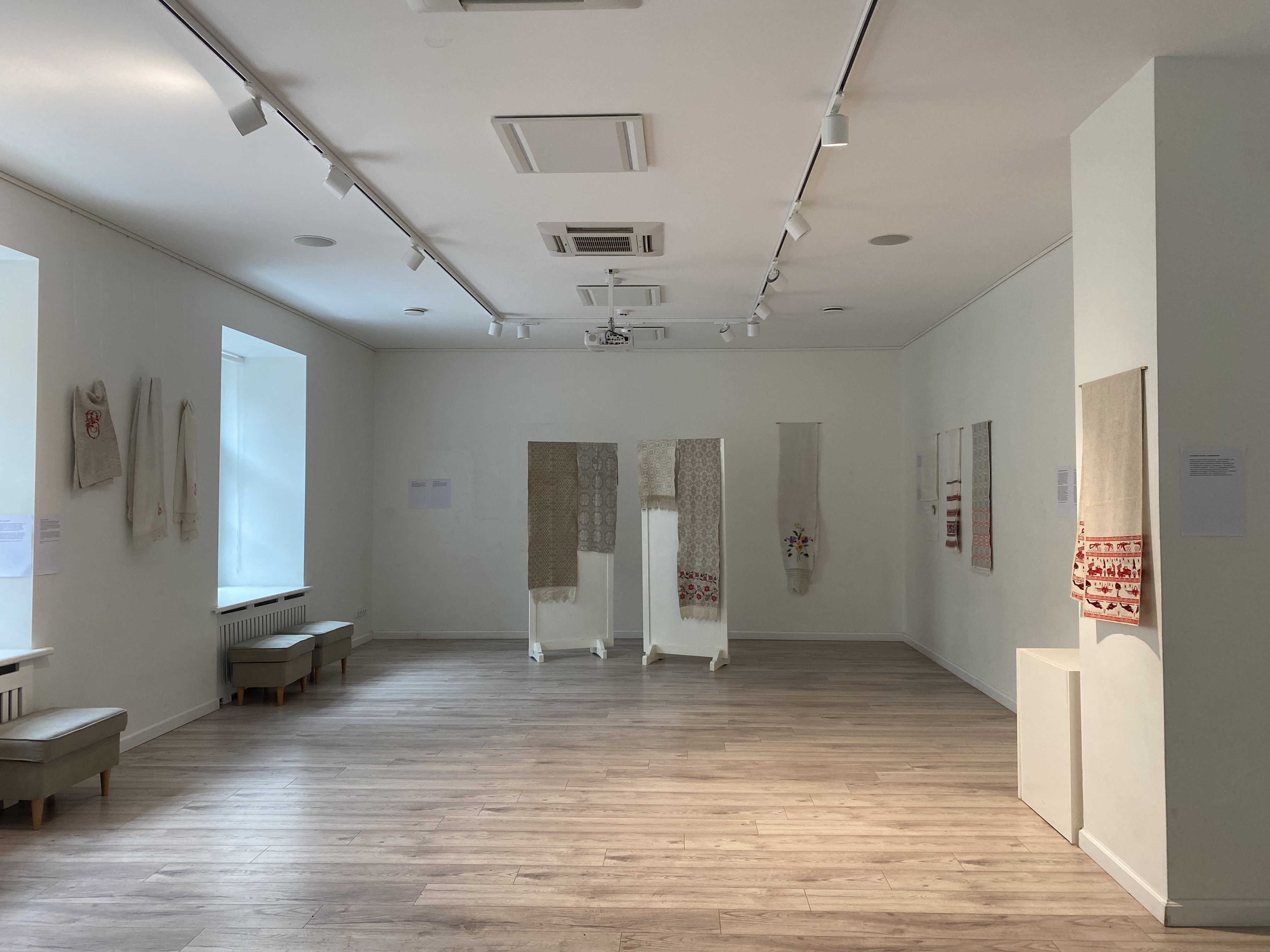
The exhibition “Interwoven” is about two things that are part of our everyday life, and which we don’t always pay attention to. The first thing is towels. The second is our thinking about heritage.
The exhibition presents towels from the 19th-21st centuries. Some of them are embroidered for loved ones, others were once part of the dowry. Some managed to become museum exhibits twice, while others were created specifically for the spaces of contemporary art galleries. Yet another is a mass-produced product with a non-trivial fate… Through these maybe very similar exhibits with very different origin stories and functions of use, it is very convenient to look at the difference in how we think about heritage: about its value and role in our lives. And also about what this way of thinking means for towel makers and users.
The exhibition was organized by Angelina Branickaja, Marija Garnak, Siarhej Makarevich, Alena Tsibets, Paulina Vituščanka. The team is very grateful to those who donated towels for the exhibition and the collection of the I. Lutskevich Belarusian Museum, as well as to the technical helpers.
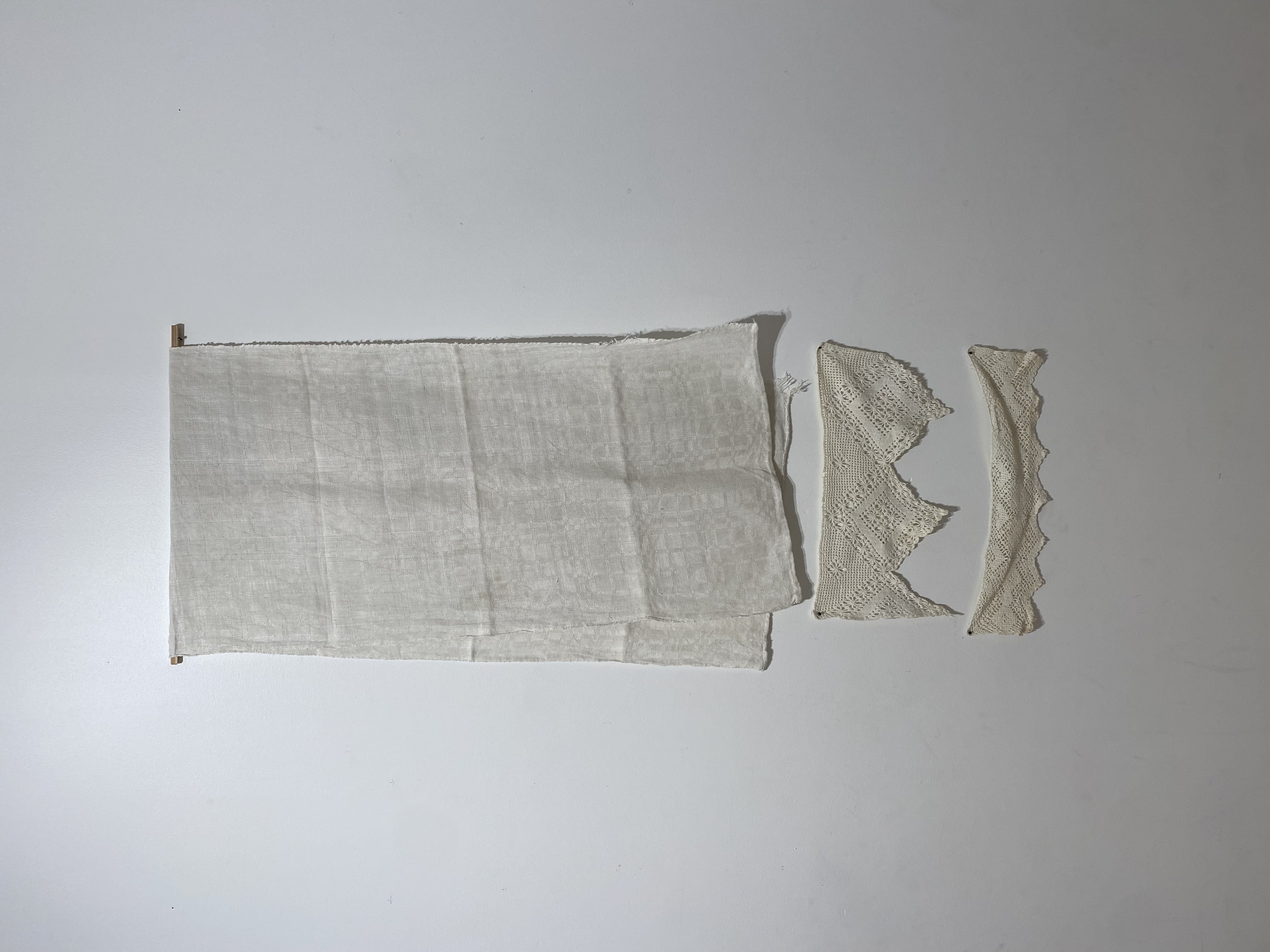
How towels become heritage
True love is not only manifested in beautiful words, but also in deeds. For example, long hours of weaving and embroidering a monogram for one’s beloved. The towel on the right was embroidered by Juliana Menke for her beloved Ivan Lutskevich, a Belarusian activist, archaeologist and collector. The history of this love is unhappy - Ivan, forever busy with civic activism and the collection of Belarusian ethnography, history and art, which later became the first Belarusian Museum in Vilnius, kept postponing and postponing the treatment for tuberculosis. He left for the sanatorium only when it was already too late. Struggling to get out of bed in Zakopane, he regretted not marrying Juliana; and this towel reminds us not only of the story of Ivan and Juliana, but also of the need to protect ourselves - among other reasons, for our homeland and our loved ones.
The second towel is also related to Lutskevich - it is one of the former exhibits of the museum named after him, for which he collected a collection, but did not have time to see it. If you look closely, you can see a museum label with a cipher on the left edge of the towel. The towel becomes an exhibit, an ethnographic and national heritage. And at the same time it becomes anonymous. The ritual towel heritage belongs to every Belarusian, but the author of this exhibit is unknown.
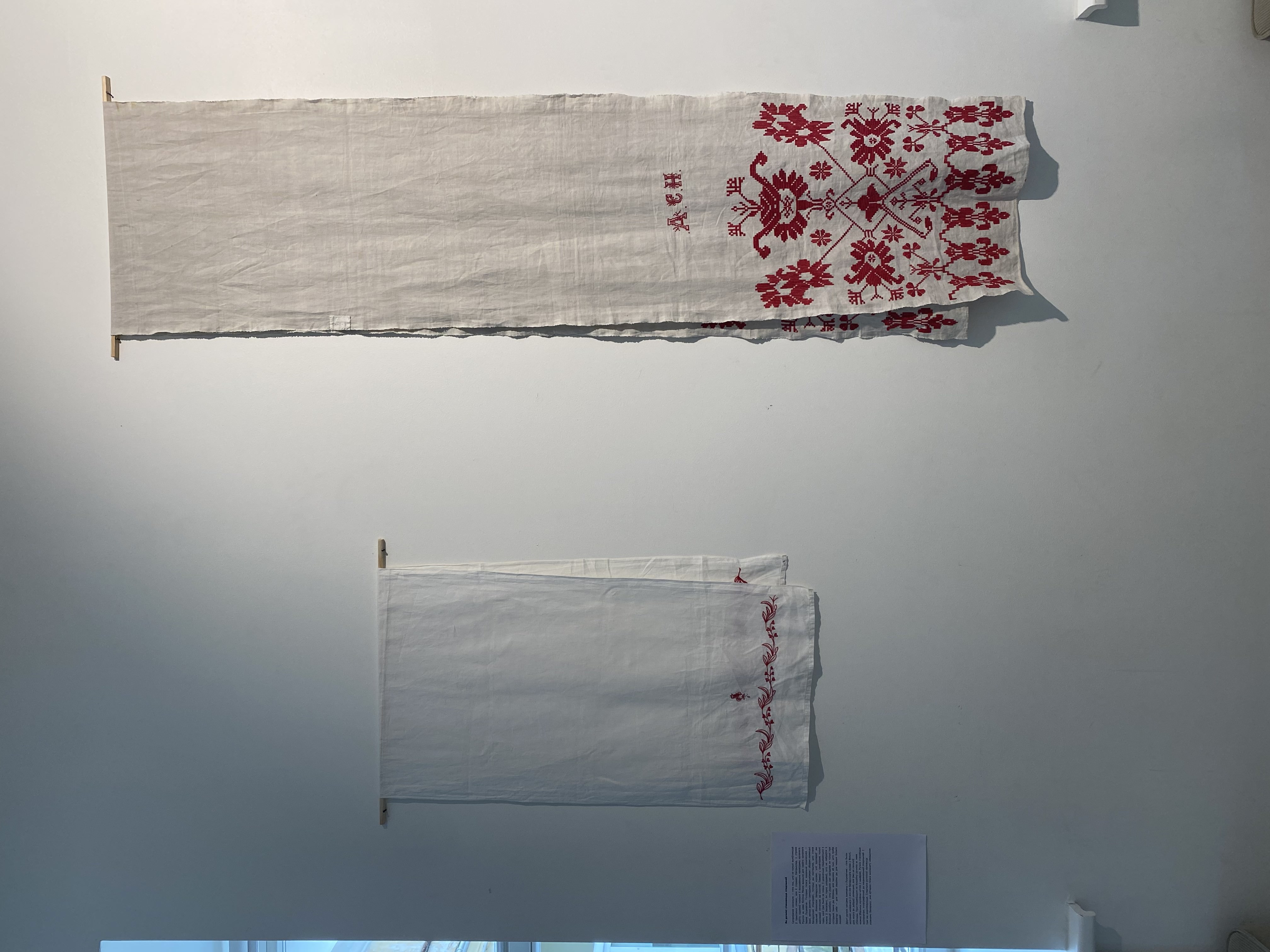
Ritual towels and monograms
A monogrammed towel is made in preparation for a wedding - the bride-to-be makes a fit of a new surname for herself through a hundred stitches of the needle. This process is correlate to what in anthropology is called a rite of passage. The wedding itself has many elements of this transformation, but even before it begins, the girl has been preparing for an event that will change her entire life.
The history of love in our region is not simple. What is meant is not the love story of some specific people, but the history of such a phenomenon as love. More often than not, one had to learn to love a man. And the monogrammed towels testify to how the future wives learned to love themselves in their new role.
On the left - a wedding towel from Astravets. In the center and on the right - from Polack.
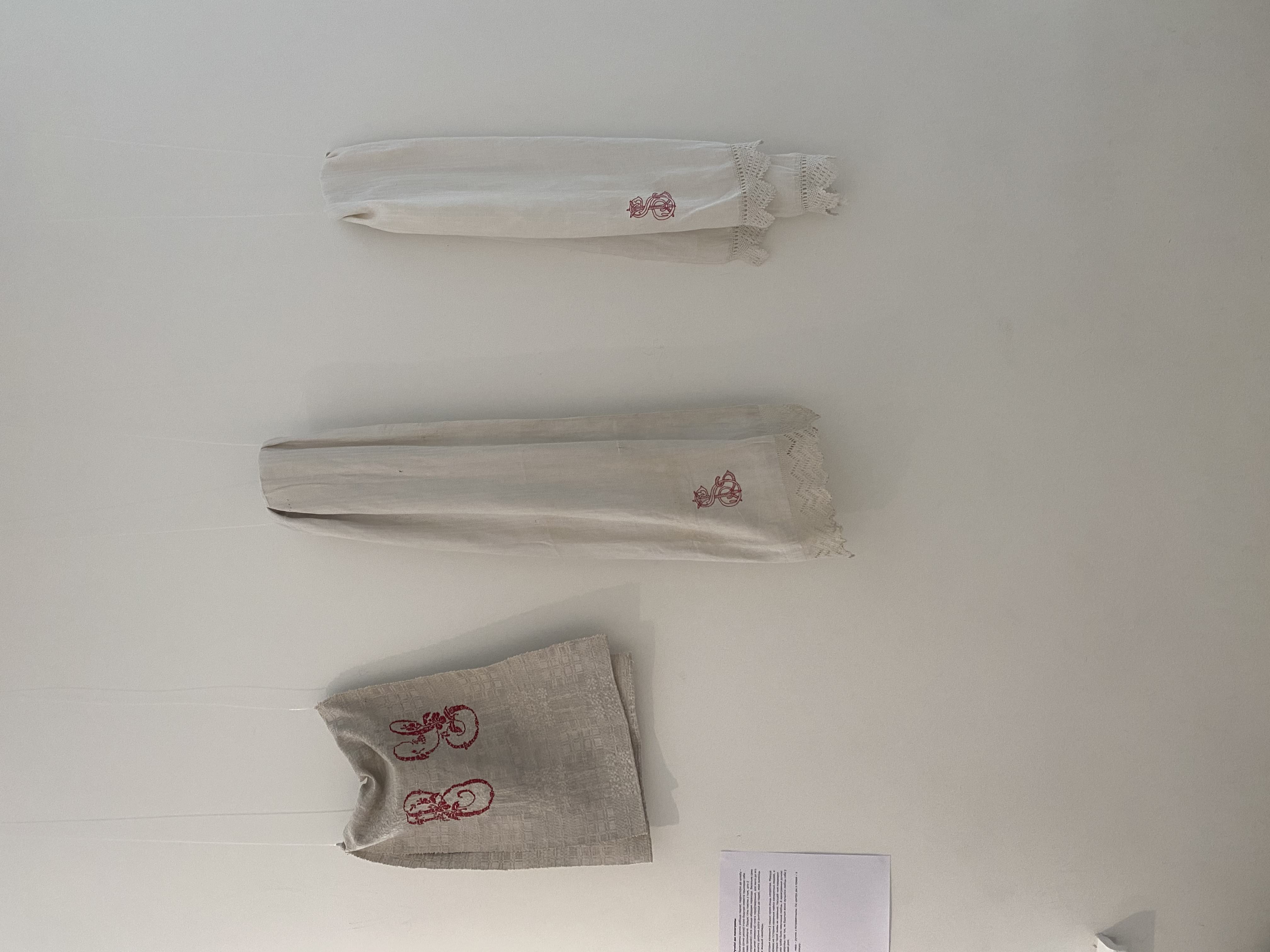
Ritual towels and heritage
The genealogy of the word “heritage” comes precisely from towels - from the dowry handed down to heirs. Looking at the things preserved for the next generations, patched up, recreated (like the late cross-stitched roses), we can think about what is the heritage in each of our lives. What do we store and transmit? What objects, skills, what beliefs, what understanding of the world?
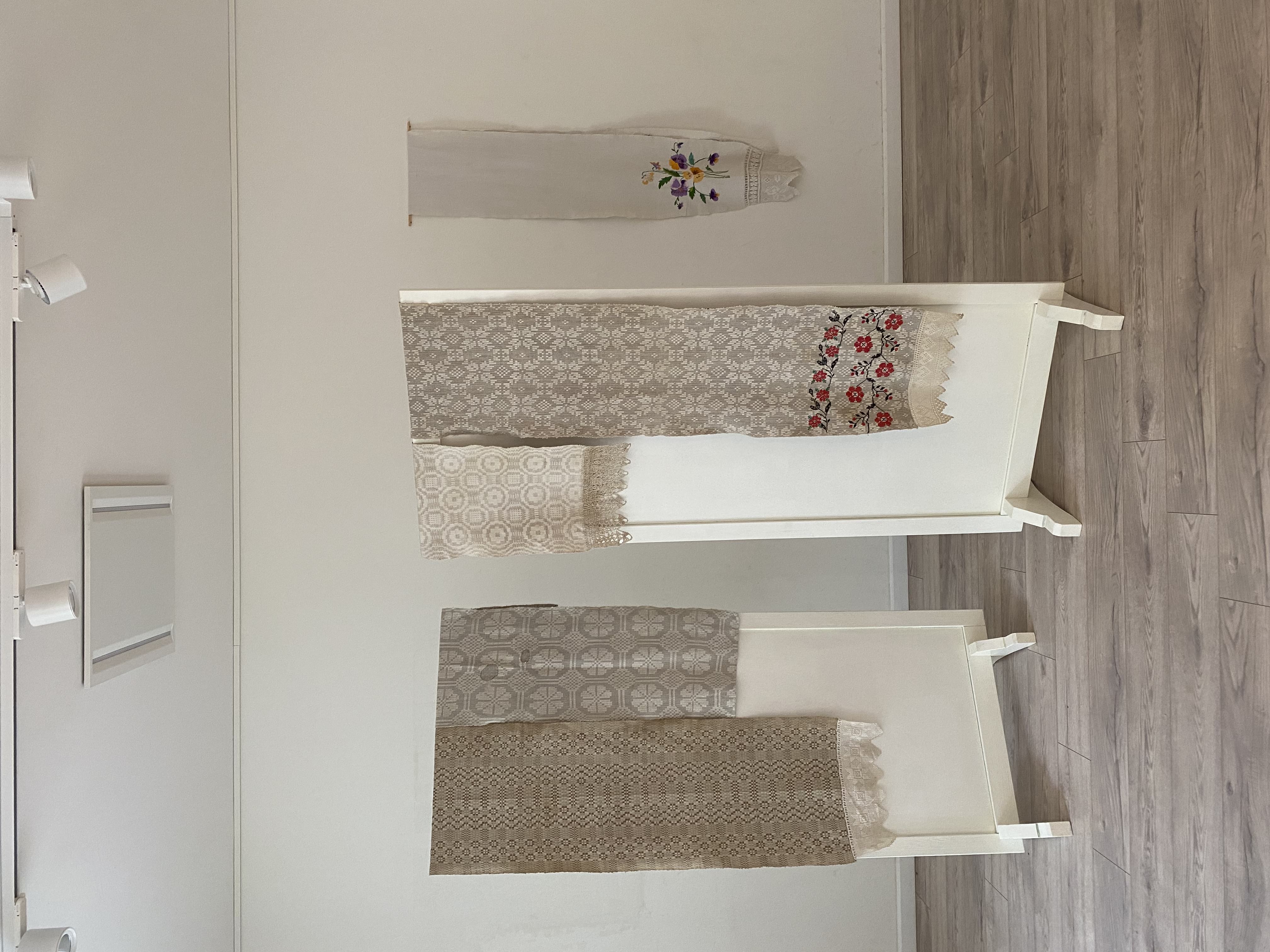
Ritual towels and ideology
The Soviet system had a paradoxical relationship with ethnic culture. On the one hand, the national movement was met with oppression. In the late Soviet years, the Belarusian youth organizations like Maistrounia or Talaka, which emerged as associations of those interested in folklore and Belarusian national culture, constantly faced the repressive behavior of the Soviet government, even if it had already lost its strength. On the other hand, ethnography, inscribed in the framework of Marxism as a testimony to the sufferings of the exploited peasantry, found its way into museum expositions and the programs of the relevant educational institutes. Moreover, to support the illusory brotherhood of Soviet nations, ethnographic national uniqueness was cultivated: fairy tale books of various nations were translated, fetishized images of national costumes were produced, pseudo-ethnographic souvenirs were circulated - among the latter, the production of towels based on national motifs flourished in Belarus.
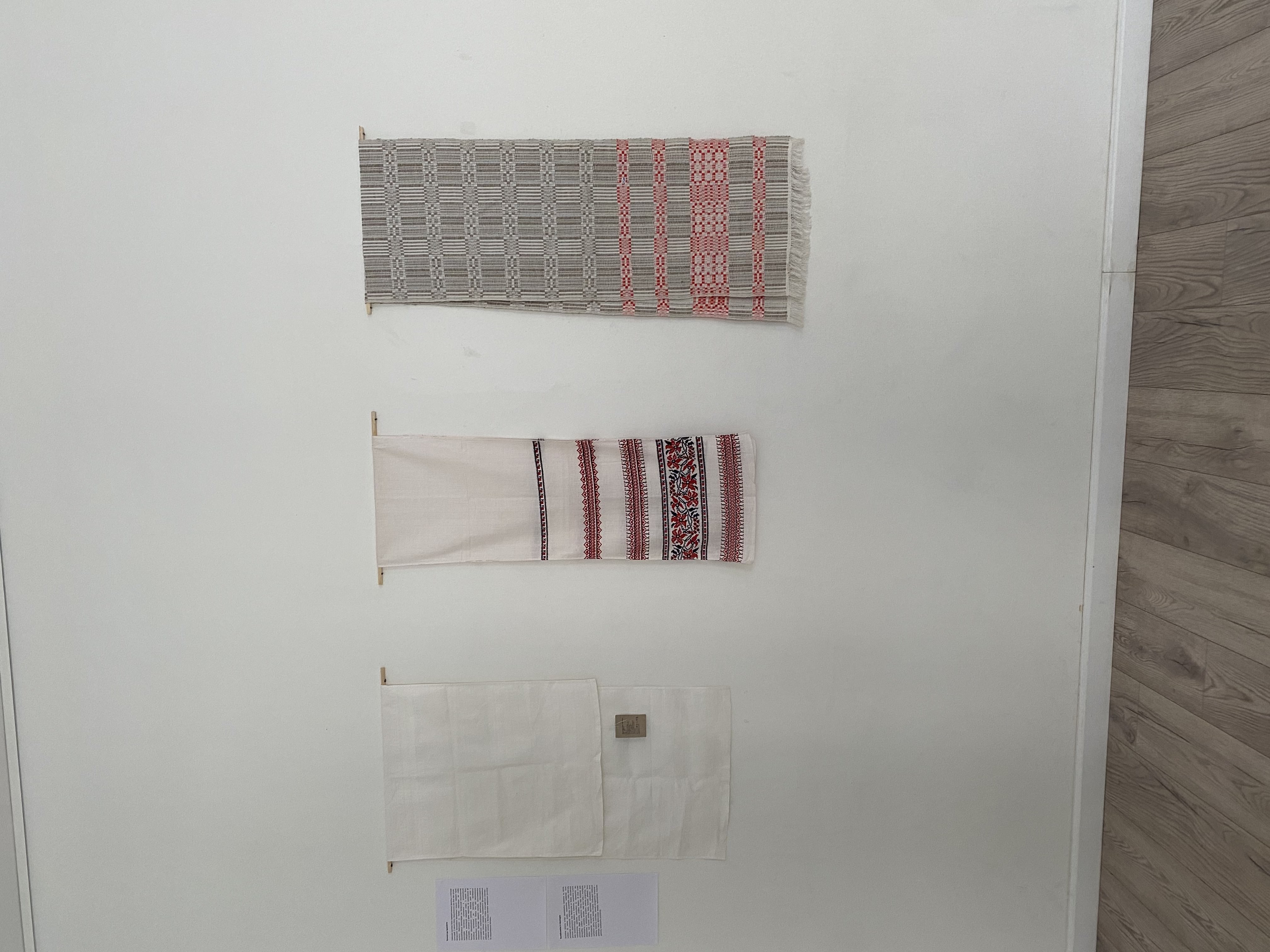
Ritual towel in contemporary Belarusian culture
Hanging from the left is a towel that Zmicier took with him on his journey across the border, leaving Belarus. After successfully reaching Lithuania, he handed over the towel to our museum. Pins with an opposition slogan and a historical figure that is not valued in modern Belarus remind us of why it was necessary to leave. Although mechanically produced, the towel still functions as an amulet for its wearer. In front of it hangs a towel from the interwar Lutskevich Museum, which in that space testified to the national identity through the uniqueness of the patterns, the skills of the craftswoman. Zmicier’s towel in the museum space testifies to modern political history, as always composed of myriad destinies.
In general, together with the rest of the cultural field, the ritual towel has acquired a postmodern meaning in our time. From the right, you can see an interpretation of a towel embroidered by contemporary artist Svetlana Petushkova. Instead of traditional flowers, there are images of the Astravets nuclear power plant, agriculture as a factor supporting the dictatorship in Belarus, and the war. Petushkova’s work is a sarcastic commentary on the popular Belarusian tradition of giving towels-amulets to officials and presidents. But at the same time, it raises questions about what we choose to remember. In the poem by the classic author of Belarusian poetry, Maksim Bahdanovich, the weaver’s hands, lost among Persian motifs, weave the flower of the homeland - the cornflower. But now, when the motherland has become a bloodthirsty aggressor against the citizens of the neighboring country and its own citizens, the moral imperative does not allow us to weave cornflowers anymore.
One will have to weave them in new ways.
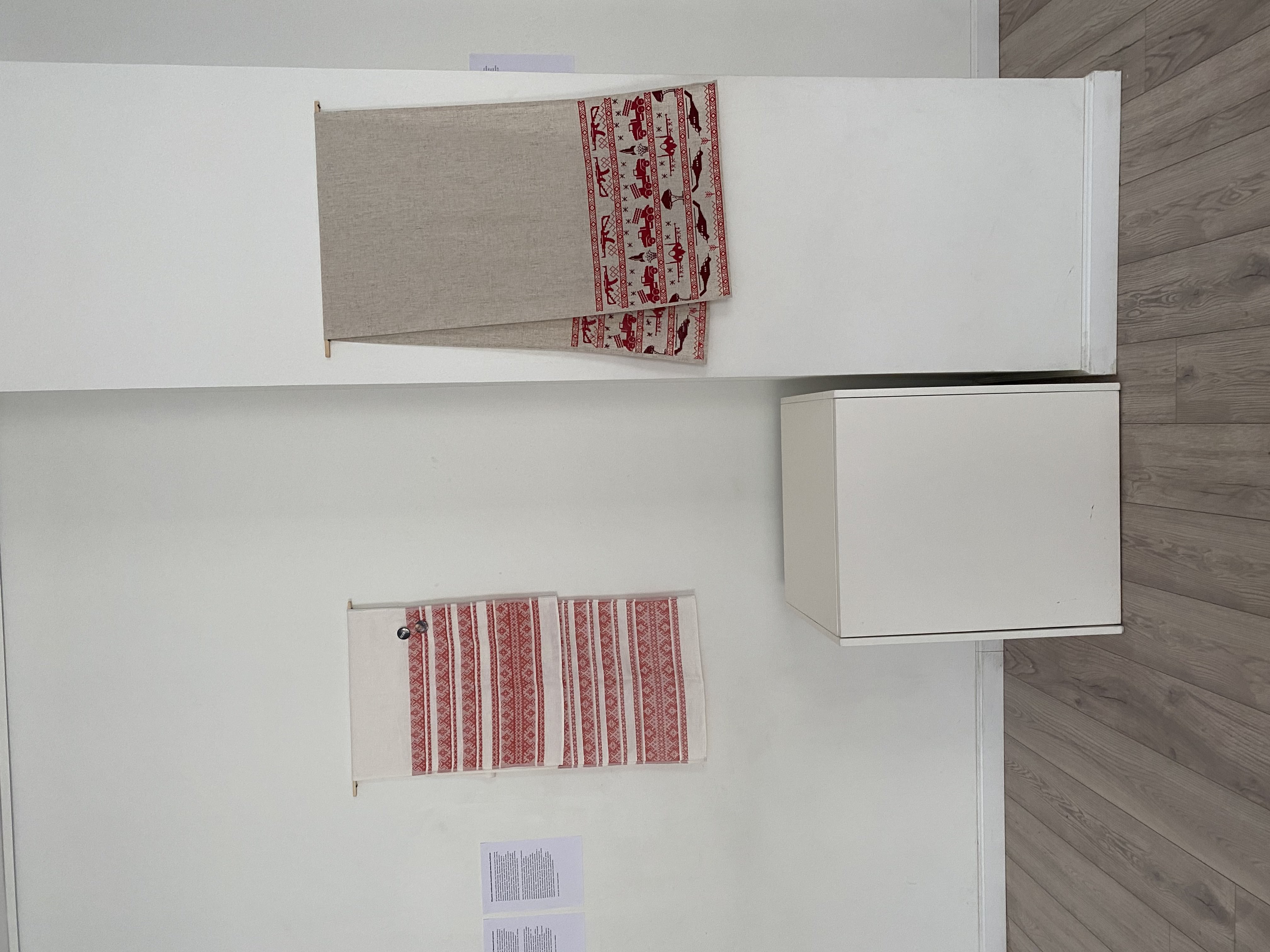
Utilitary towel in everyday life
The last part of our story is about those towels that accompany us every day in our kitchens. When you get home, stop to look at them for a minute and think about their origin story - how the towel of itselfcame to be in the kitchen, and where from your towel came to your kitchen. Modern machine tools still rely on the aesthetics of tradition. And heritage exists around us every day, we use it every day, even if we don’t pay attention to it.
